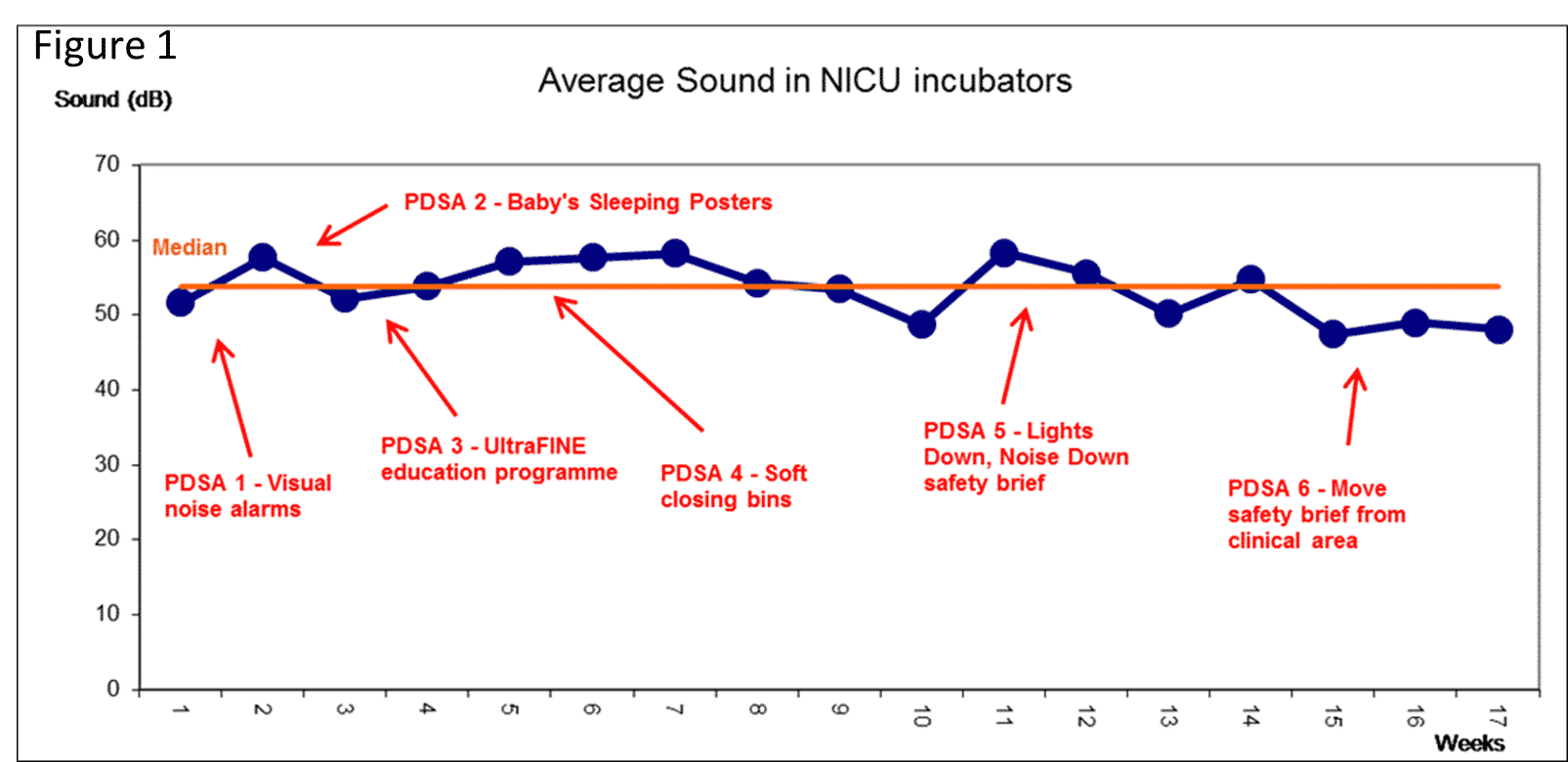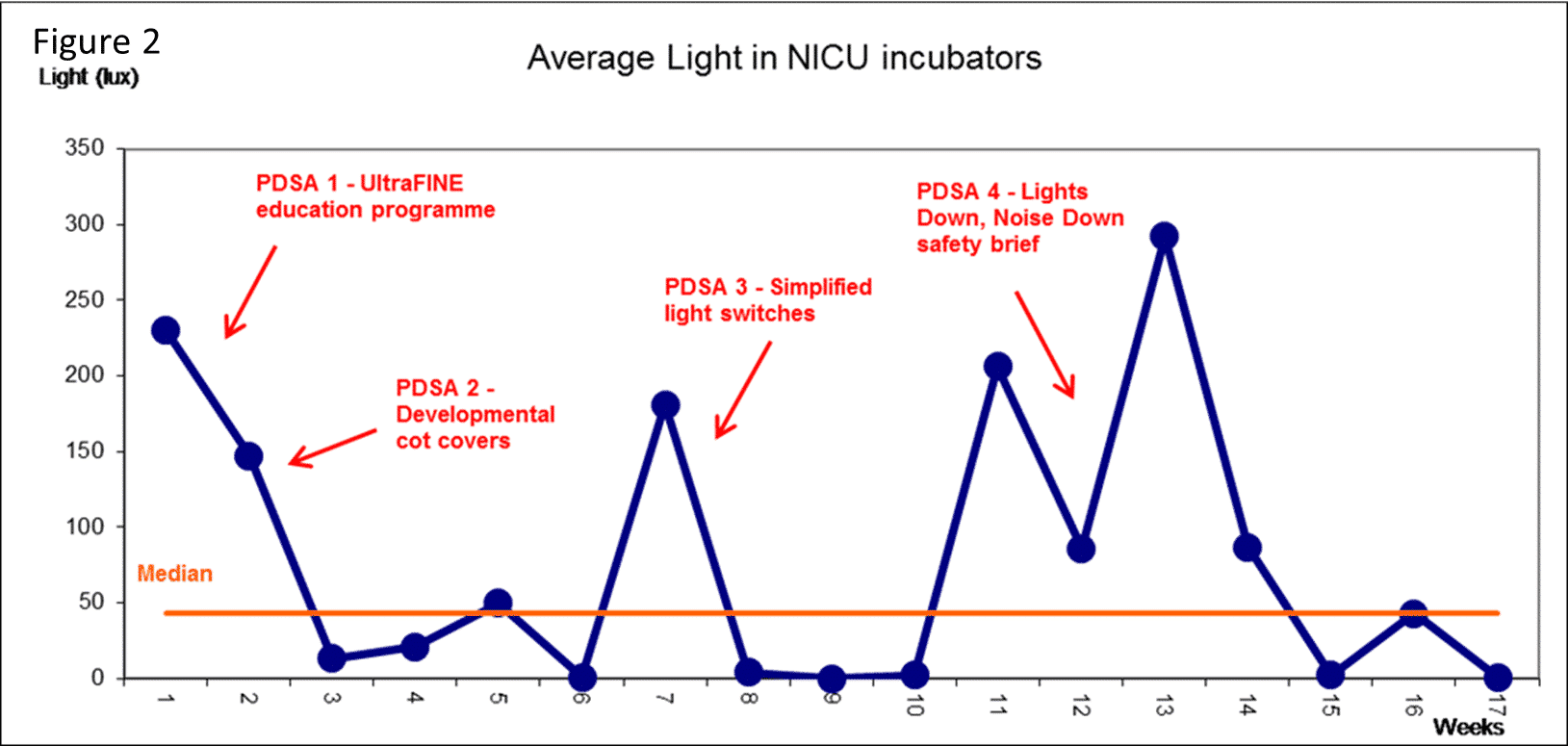
Reducing Neurodevelopmental Risk Factors within the Neonatal Intensive Care Setting using Quality Improvement Methodology
Background: The impact of negative hospital environmental factors, for example, aberrant light and excess sound, on long-term neurodevelopmental outcomes in neonates is well recognised. Loud noises near preterm infants cause reduced oxygen saturations, apnoea’s and alterations in sleep-wake cycles. Guidelines from American Academy of Paediatrics state that noise intensity in neonatal setting should not exceed 45dB. Acceptable illuminance in a Neonatal Unit is 10-600 lux. Excess light can cause significant stress to pre-term infants and reducing light levels in Neonatal units has been shown to improve stability and growth in pre-term infants.
Objective: We aimed to reduce the average sound level in the Ulster Hospital Neonatal Unit to 45 dB and reduce the average light level to below 200 lux over a 4-month period.
Methods: e monitored sound and light levels over a five-minute period weekly in the Neonatal Intensive Care Unit (NICU) and Special Care Baby Unit (SCBU) using Lightmeter and Decibel X phone applications, to enable rapid bedside monitoring and inform change. We introduced multiple step wise interventions over a seventeen-week period. Interventions included developmental cot covers, simplifying light switches and introducing a ‘lights down, noise down’ policy.
Results: As a result of multiple PDSA cycles we were able to demonstrate improvement in the average decibel exposure from 52dB to 49dB (figure 1) in a busy neonatal intensive care unit. Average light levels were reduced from 236lux to 51lux (figure 2).


Conclusion: We have shown that targeting light and sound levels using frequent monitoring and quality improvement methodology can result in improvement. The marginal gains and wide variation in results from week to week in some instances reflect the importance of frequent monitoring and reinforcement of PDSA interventions in order to change practice successfully for the long term.
Powered by Eventact EMS